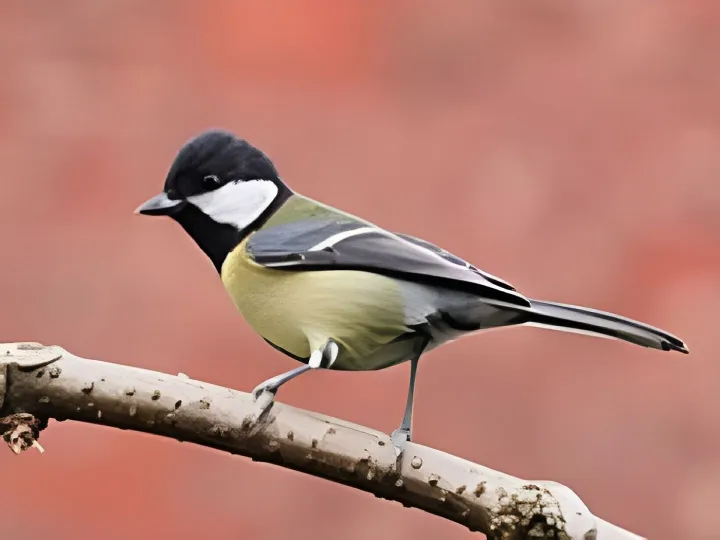Having seen the havoc wreaked on wooden nest boxes by grey squirrels (and to the clutch of eggs or to the growing brood that were inside), the Trust made the decision that all our boxes would be made of "Woodcrete". We began by purchasing most Blue Tit boxes and a far smaller number for Great Tits. However, the birds clearly did not follow our logic, because we found that over 80% of the boxes had been used by Great Tits, with Blue Tits occupying far, far fewer. (This does not say anything about the Blue Tit population, however – perhaps our Blue Tits prefer to occupy cavities in trees, rather than nesting in our expensively-provided pre-fabs!)
All the tits are active, noisy, and social but territorial birds. It is easy to tell that a Great Tit is somewhere close by on hearing its characteristic "Teecha, teecha" cry. This has been described as sounding like a bicycle pump which is being squeezed while your finger is over the end. Like other tits, Great Tits transport food with their beak, and then transfer it to their feet, where it is held while they eat. All the tits are basically insect-eaters and Great Tits enjoy a wide range of small insects, especially the caterpillars that can strip the new leaves from branches almost as fast as they grow! During the breeding season, the tits prefer to feed these protein-rich caterpillars to their young above all other food. However, the adult birds also eat seeds and nuts, especially in winter, so they are frequent visitors to the woodland feeders at all times of the year. If a Great Tit obtains a larger food item (such as a hazelnut) they engage in a practice known as "hold-hammering" – they hold the item between their feet and hammer it with their bill until they break it open – it seems that they can open a hazelnut in about 20 minutes! Great tits combine dietary versatility with a considerable amount of intelligence and the ability to solve problems through insight learning – that is to solve a problem through insight rather than trial and error. In England, Great Tits learned to break open the foil caps of milk bottles delivered at the doorstep of homes to obtain the cream at the top. This behaviour, first noted in 1921, spread rapidly over subsequent years, so that I can remember coming home from school during the "Big Freeze" of January & February 1963 to find that our milk bottles had already been opened for us by the hungry birds! Apparently, Great Tits have also been recorded making use of tools – using a conifer needle in their bill to extract larvae from a hole in a tree.
Great tits are monogamous; they form permanent pairs and establish their own breeding territories. These territories are set up in late January and defence of them begins in late winter or early spring. Territories are usually reoccupied in successive years, even if one of the pair dies, so long as the brood was raised successfully. Where comfortable, warm and safe bird boxes are unavailable, Great Tits will excavate a cavity in a tree or in standing deadwood. They are seasonal breeders, with the exact timing of breeding varying according to several factors, most importantly location. In this area, most breeding occurs between January and September. The female will lay around 12 eggs and incubates them alone, although both parents subsequently raise the chicks. In most years the pair will raise two broods. Nature is red in tooth and claw and the nests may be raided by woodpeckers, squirrels and weasels, while the adults are hunted by sparrowhawks. The Great Tit does not generally migrate, and pairs will usually remain near or in their territory all year round. Young birds will have to disperse from their parents' territory, but do not usually go far. Thus, the population in our woodland should be reasonably secure – a small part of the 2.5 million breeding pairs estimated to live in Great Britain!

